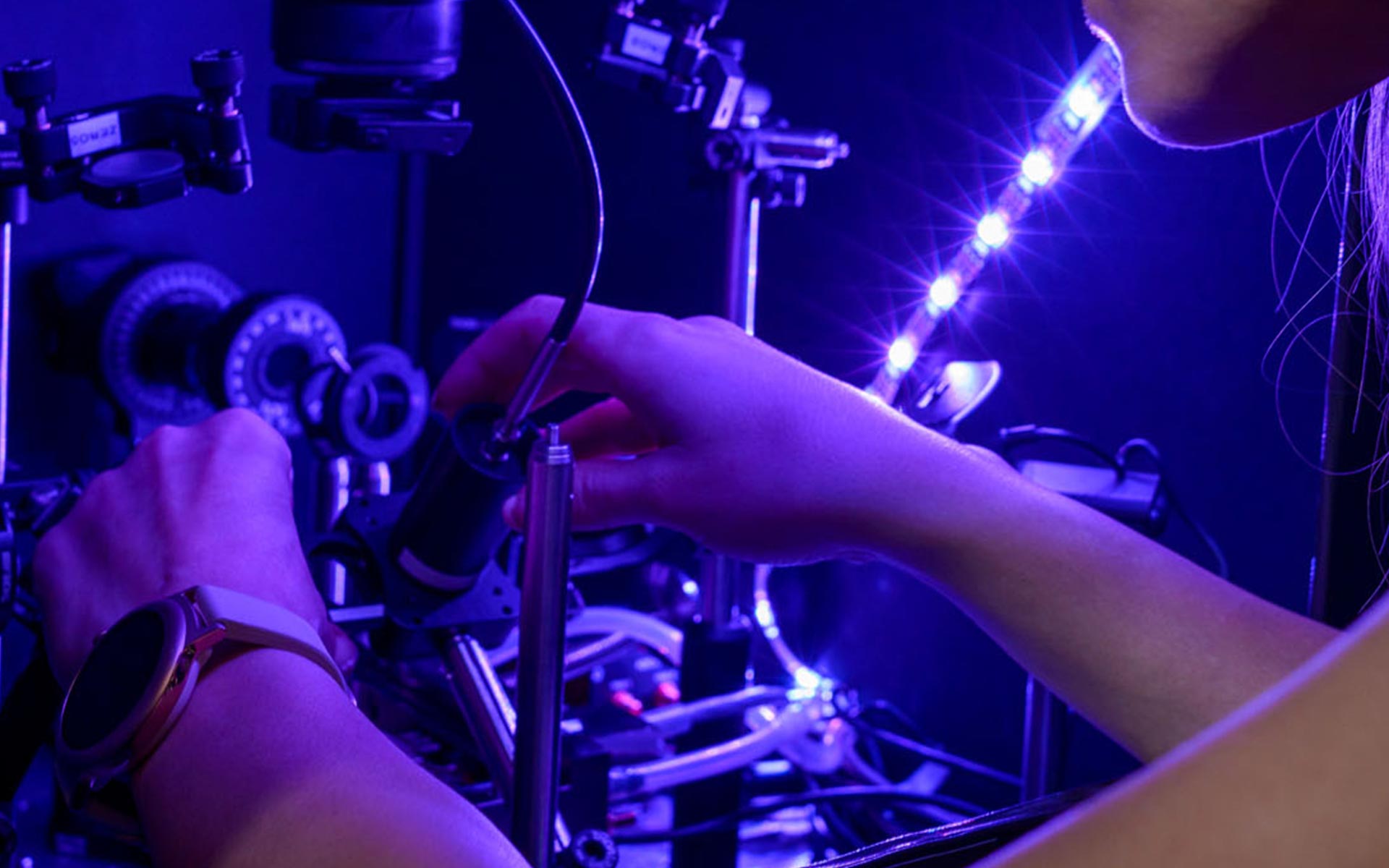
Our Funded Projects
Innovation in action
The Defence Innovation Partnership fosters defence-research and development in South Australia by connecting researchers, industry and government.
Through strategic funding initiatives like the Collaborative Research Fund (CRF) and the Activator Fund, the Defence Innovation Partnership empowers cross-sector collaboration that transforms bold ideas into real-world impact for our Defence Forces.
In partnership with the South Australian Space Industry Centre, the Defence Innovation Partnership also supports the South Australian Space Collaboration and Innovation Fund, fuelling the growth of space technologies and capability in the state.
Explore our collection of case studies via the interactive table below to see how these funding initiatives are shaping the future of defence and space innovation in South Australia.
-
Radioisotope Heating Unit Project
Scott Edwards, entX
South Australian Space Collaboration and Innovation Fund$200,000*April 2025 -
Understanding and Countering Online Influence
Prof Lewis Mitchell, University of Adelaide
Activator$400,000April 2025 -
Mapping Pacific Networks
Prof Joanne Wallis, University of Adelaide
Activator$400,000April 2025 -
Sensor-based Environmental sense-making Network for Threat Response and Information (SENTRI)
Josh Fitzmaurice, Fleet Space Technologies
Activator$1.6 millionFebruary 2025 -
Developing an underwater recharging station to maximise the endurance and mission effectiveness of autonomous / uncrewed underwater vehicles
Prof Apel Mahmud, Flinders University
Collaborative Research Fund$149,670February 2025 -
Bayesian modelling for long-term prediction of biofilm growth under environmental variability at key naval ports in Australia
Dr Tamar Jamieson, Flinders University
Collaborative Research Fund$149,741February 2025 -
A Tool for Simulation-Based Evaluation of Human-Driven Processes for Critical Infrastructure Operations Resiliency (HDP-CIOR Tool)
A/Prof Elena Sitnikova, Flinders University
Collaborative Research Fund$149,831January 2025 -
Distributed multi-agent TEWA algorithms for force-level battle management: a scalable approach for real-time decision-making in dynamic combat environments
Dr Kamal Mammadov, University of Adelaide
Collaborative Research Fund$150,000January 2025 -
Leoflect
Dr Tony Scoleri, AICRAFT
South Australian Space Collaboration and Innovation Fund$100,000*August 2024 -
Lunar Search and Rescue (LunaSAR)
Dr Mark Rice, Safety from Space
South Australian Space Collaboration and Innovation Fund$100,000*August 2024 -
Enhancing the RAN’s Undersea Surveillance Minimum Viable Capability
Jeff Laycock, Acacia Systems
Activator$1.6 millionMarch 2024 -
First-in-class pharmaceutical radiation protectant and mitigant
Prof Christopher Sweeney, The University of Adelaide
Collaborative Research Fund$150,000January 2024 -
Warm Starts and Goal-based Heuristics to Improve MARL Performance in Advanced Distributed Defence
A/Prof Claudia Szabo, The University of Adelaide
Collaborative Research Fund$150,000January 2024 -
Sovereign manufacturing reliable defence structures by 3D metal printing and structural health monitoring
A/Prof Ling Yin, The University of Adelaide
Collaborative Research Fund$150,000January 2024 -
Evaluation of State Uncertainty for Resident Space Objects
Prof Samuel Drake, Flinders University
Collaborative Research Fund$150,000December 2023 -
Cyber Terrain Mapping and Analysis of Operational Technology Networks
Mr Ian Will, Insight Via Artificial Intelligence
Collaborative Research Fund$147,128December 2023 -
Mathematical modelling of a complex and contested conflict environment: influence of logistics and resource transfer
A/Prof Sergiy Shelyag, Flinders University
Collaborative Research Fund$149,830December 2023 -
Rapid Environmental Monitoring Using Autonomous System
A/Prof Damith Ranasinghe, The University of Adelaide
Collaborative Research Fund$148,658May 2023 -
Dual use satellite messaging beacon system for Defence and Emergency Services
Dr Mark Rice, Safety from Space
Collaborative Research Fund$150,000February 2023 -
Validation of a Test and Evaluation Model for Planning and Architecture Optimisation
Dr Mahmoud Efatmaneshnik, University of South Australia
Collaborative Research Fund$149,404December 2022 -
Sensing semiconductor devices with terahertz waves
Prof Withawat Withayachumnankul, The University of Adelaide
Collaborative Research Fund$150,000November 2022 -
Deep Sensing: ML Enhanced Optical Fibre Hydrophone
Dr Stephen Warren-Smith, University of South Australia
Collaborative Research Fund$150,000January 2022 -
Advancing SOCRETIS (“SOCial REasoning Tool & Interactive System”): An AI- enabled collaborative reasoning aid for the information environment
Dr Rachel Stephens, The University of Adelaide
Collaborative Research Fund$150,000January 2022 -
A virtual reality tool to manipulate digital human mannequins for evaluating ergonomics and human factors
Dr Peter Schumacher, University of South Australia
Collaborative Research Fund$149,894January 2022 -
A framework for addressing design challenges in wargames
Dr Mehwish Nasim, Flinders University
Collaborative Research Fund$149,957December 2021 -
Developing neuroscience-based approaches to assessing and enhancing human cognitive performance in challenging operational environments
A/Prof Maarten Immink, Flinders University
Collaborative Research Fund$149,999December 2021 -
Freeform optics for small satellites
Dr Kamil Zuber, University of South Australia
Collaborative Research Fund$149,576February 2021 -
Solutions for light pollution from console displays on naval platforms
Scott Begbie, APC Technology
Collaborative Research Fund$131,738January 2021 -
Quantum-Enhanced Clock Synchronisation over a Free-Space Channel
Dr Fred Baynes, QuantX Labs Pty Ltd
Collaborative Research Fund$150,000January 2021 -
Coastline monitoring using autonomous high-altitude platforms (HAPs)
Vincent Lachance, Lux Aerobot Pty Ltd
Collaborative Research Fund$150,000December 2020 -
InFoDust: The intelligence and forensic potential of dust traces for counter-terrorism and national security.
Dr Nicole Foster, Flinders University
Collaborative Research Fund$149,986December 2020 -
Nanofluid Satellite Thrusters
Prof Craig Priest, University of South Australia
Collaborative Research Fund$149,659December 2020 -
Battlespace visualisation: Enabling superior decision making
Steve Cope, Voxon Photonics
Collaborative Research Fund$150,000November 2020 -
Narrative visualisation of simulations for force design
Prof Bruce Thomas, University of South Australia
Collaborative Research Fund$150,000January 2020 -
Develop and test active coatings to prevent the growth of unwanted organisms on marine surfaces
Prof Mats Andersson, Flinders University
Collaborative Research Fund$150,000December 2019 -
Australian Research & Experimental Submarine (ARES) – design and simulation for submarines in an industry 4.0 environment
Prof Eric Fusil, The University of Adelaide
Collaborative Research Fund$150,000December 2019 -
Optimal target detection for marine radars using waveform diversity
Prof Kutluyil Dogancay, University of South Australia
Collaborative Research Fund$150,000December 2019 -
Identifying Combat and Combat-Related Stigma Through The Language of a Deployed Australian Military Population
Dr Leanne Glenny, formerly of University of South Australia
Collaborative Research Fund$73,503December 2019 -
Miniaturised Orbital Electronic Warfare Sensor Systems (MOESS) – Phase 1
Craig Simpson, DEWC Systems
Collaborative Research Fund$150,000December 2018 -
AI Enabling Australia’s Future Submarine
Horden Wiltshire, Acacia Systems
Collaborative Research Fund$150,000December 2018 -
Engineering, design and lab based testing of whole of vehicle health usage monitoring system (vHUMS) for defence vehicles
Neil Bryans, Dynamic Engineering Solution Pty Ltd
Collaborative Research Fund$150,000December 2018 -
Human-machine interfaces for detecting, monitoring and managing psychological stress
Prof Carolyn Semmler, The University of Adelaide
Collaborative Research Fund$150,000December 2018 -
Next Generation Solutions for Passive Inverse Synthetic Aperture Radar (ISAR) and Improved Situational Awareness
Prof Kutluyil Dogancay, University of South Australia
Collaborative Research Fund$149,450June 2018 -
Economical Technologies for the Detection and Remediation of Water Contaminated with Perflourinated Substances
Prof Justin Chalker, Flinders University
Collaborative Research Fund$150,000June 2018 -
Developing Autonomous Seakeeping Capability for Unmanned Surface Vessels (USV)
Prof Karl Sammut, Flinders University
Collaborative Research Fund$150,000June 2018 -
Realising the Benefit of Augmented Reality (AR) Devices in Military Applications
Prof Anna Ma-Wyatt, University of Adelaide
Collaborative Research Fund$150,000June 2018
*The South Australian Space Collaboration and Innovation Fund is funded by the South Australian Space Industry Centre and facilitated by the Defence Innovation Partnership.





